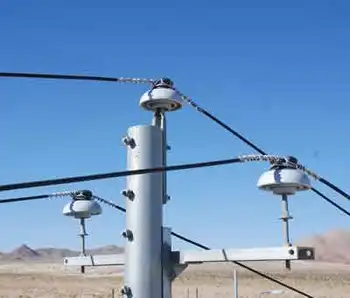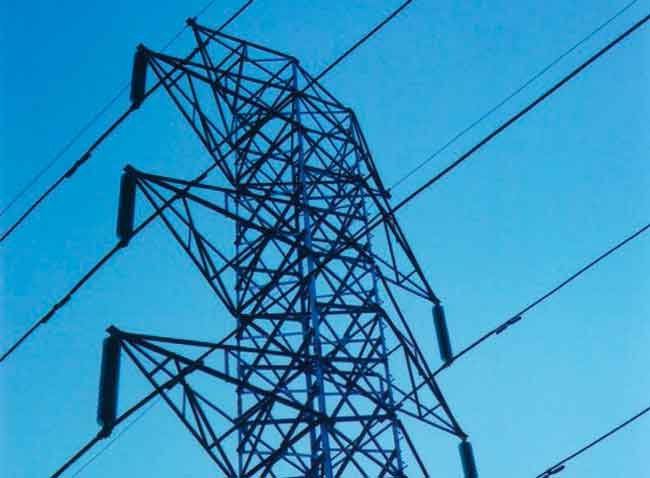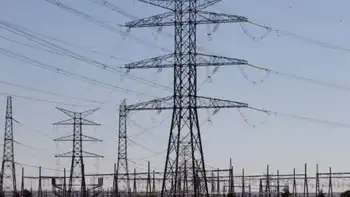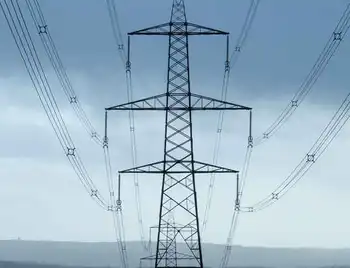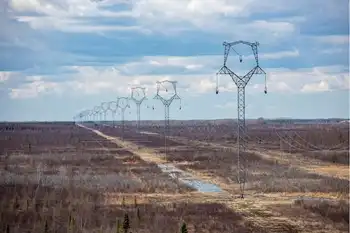EntrepreneurÂ’s vision is up in the air
By Boston Globe
NFPA 70e Training - Arc Flash
Our customized live online or in‑person group training can be delivered to your staff at your location.

- Live Online
- 6 hours Instructor-led
- Group Training Available
Today, Kropper's vision is one step closer to reality. He and several partners have formed WindPole Ventures, a Boston wind power development firm that will evaluate 1,150 microwave tower sites - including about a dozen in Massachusetts - to gauge their suitability for wind turbines. WindPole Ventures eventually would like to lease as many as 300 of the sites from their owner, American Tower Corp.
Matt Peterson, director of communications for American Tower, said the company considered WindPole's proposition "an interesting way to explore how some of our assets might help this country solve its energy problem." But no deal has been finalized. The wireless and communications company, based in Boston, owns more than 20,000 microwave tower sites in the United States, Mexico, and Brazil.
Many of the sites WindPole Ventures is considering are home to towers built by AT&T during the Cold War as part of a government and civilian network to relay data, including voice communications. American Tower said some of the sites are currently being used as cellphone towers. Others, according to Kropper, are no longer used, having been rendered obsolete by fiber-optic lines.
After WindPole studies the sites, Peterson said, American Tower will meet with it "to determine next steps or potential next steps." The evaluation is expected to take about nine months.
Kropper and his partners cite several reasons for building wind turbines on microwave tower sites:
Nearby residents are accustomed to living near microwave towers, which are 150 to 495 feet tall - so they are less likely to be bothered by the 240-foot-tall turbines WindPole proposes.
The sites are already connected to the electrical grid.
The towers already have permits from the Federal Aviation Administration and Federal Communications Commission, which could make it less complicated to win permission to put turbines up near or in place of the towers.
"We were trying to find a way to solve two problems that wind developers have, and that's NIMBY-ism - 'we don't want that ugly tower here' - and cost. How can we make wind power cheaper?" Kropper said.
If everything goes as planned, he said, the company hopes to install about 150 turbines, capable of generating a combined 300 megawatts, on tower sites within the next five years.
According to a formula used by the American Wind Energy Association, a national trade association, that would generate enough electricity to power about 79,000 U.S. households for a year.
Kropper said it could cost several thousand dollars annually to lease each site from American Tower. WindPole could also have to pay American Tower a per kilowatt charge for electricity generated. In addition, he said, each turbine would cost about $3.5 million to purchase and install.
To determine whether a microwave tower site is suitable for a turbine, WindPole will evaluate such factors as its exposure to wind and whether access roads can accommodate trucks carrying large turbine parts. Kropper said there are promising Massachusetts sites in Ashburnham, Peru, and Wendell.
Nick d'Arbeloff, executive director of the New England Clean Energy Council, which promotes renewable energy businesses, called WindPole's idea "extremely innovative" and said it could give the industry a boost. The council recently established a fellowship program for entrepreneurs who want to start clean-energy businesses. Kropper, a self-described former "energy czar" who used to work with Boston hospitals to cut utility costs, is part of the first group of fellows. He credits the fellowship with helping him to come up with the idea for WindPole Ventures.
James Manwell, director of the Renewable Energy Research Laboratory at the University of Massachusetts at Amherst, said WindPole Ventures' business plan makes sense.
"A good turbine site is a site that's windy, of course, and easily accessible," Manwell said.





